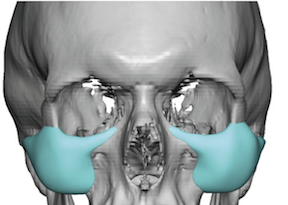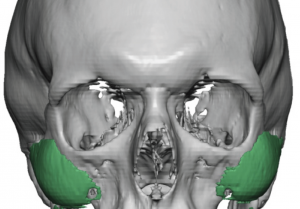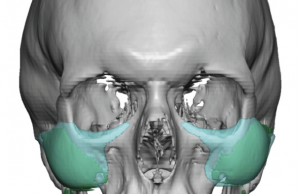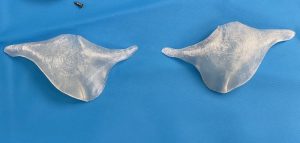Background: The historic use of preformed standard cheek implants creates fullness in the mid- to lower anterior cheek region. This augmentation effect has a specific oval-type appearance due to the shape of the implant. While this is frequently effective for many women it usually is not for men. Men prefer a higher cheek augmentation effect that is more in alignment and appearance with the shape of the horizontally oriented infraorbital-cheek-arch bone line.
But in more significant midface developmental deficiencies there is an overall lack of midface growth both anteriorly as well as in lateral width. The use of standard cheek implants, whether it is female or a male, does partially correct some of the midface deficiency and and can be a good starting point. But the bony deficiency is not a ‘spot’ one and is more global in effect across the midface. Thus a midface implant design is needed to create broader or more complete surface area bone coverage.


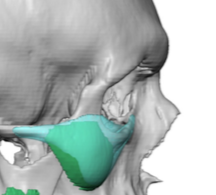
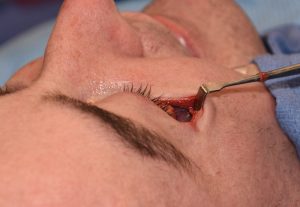
It would not be rare in the custom facial implant world that patients present with existing standard implants in place. While they usually provide improvement over having no implants at all their inadequacies become apparent when all facial swelling subsides. This is particularly true in congenital midface deficiencies that a combined infra-orbital component seen by undereye hollowness and flat cheeks. It is easy to understand why many surgeons use standard cheek implants for this problem based on familiarity with them and unfamiliarity with the extent of the actual problem. It is a simple case of using an implant designed for mild to moderate aesthetic deficiencies for a more generalized developmental problem.
Case Highlights:
1) While most standard cheek implants can not create the type of midface effect most men want, in significant cheek deficiencies they may merely have insufficient bone coverage to achieve the patient’s midface augmentation goals.
2) The existing standard cheek implants serves as a guide to extend their effects in a new custom infraorbital-cheek implant design that more completely addresses the patient’s desired midface effects.
3) In such larger custom infraorbital-cheek implants a dual incisional approach is used.
Dr. Barry Eppley
Indianapolis, Indiana

